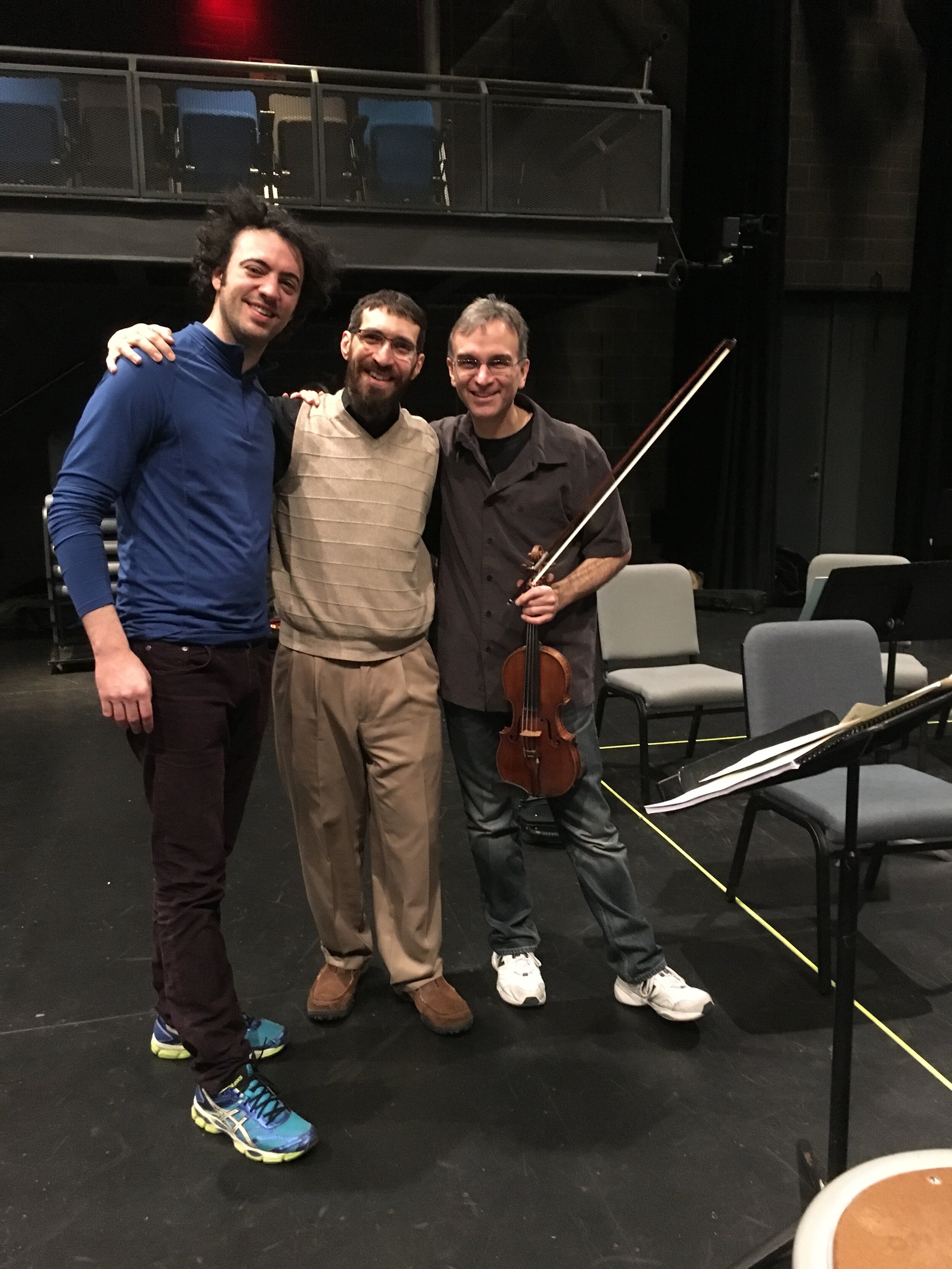chamber concerto for violin
Duration ca. 15' (2015)
2.2.2.2/2.2.0.0/hp/str/solo vln
View Full Score
View Piano Reduction
LISTEN
The Knights conductor Eric Jacobsen, composer Jonathan Leshnoff, and violin soloist Gil Shaham rehearsing for the World Premiere in 2016.
Commissioned by Shriver Hall Concert Series.
Premiered by The Knights conducted by Eric Jacobsen, soloist Gil Shaham, Baltimore, MD, February 14, 2016.
Other performances: The Knights conducted by Eric Jacobsen, soloist Gil Shaham, Emory University, Atlanta, GA, February 20, 2016; The Knights conducted by Eric Jacobsen, soloist Gil Shaham, University of Georgia, Athens, GA, February 21, 2016; Towson University Symphony Orchestra conducted by Julien Benichou, soloist Jeffrey Howard, Towson, MD, May 6, 2016; Aspen Chamber Symphony, conducted by Robert Spano, soloist Gil Shaham, Aspen, CO, July 21, 2017; Lake Tahoe SummerFest, conducted by Joel Revzen, soloist Itamar Zorman, Incline Village, NV, August 11, 2017; Asheville Symphony Orchestra conducted by Nicholas Hersh, soloist Itamar Zorman, March 17, 2018; Pennsylvania Chamber Orchestra conducted by Yaniv Attar, soloist Max Zorin, State College, PA, April 14, 2019.
It takes a lot to overshadow a Gil Shaham performance, and this was another good one. The violinist invested soul and phenomenal technique in Jonathan Leshnoff's heartfelt and generously communicative Chamber Concerto for Violin and Orchestra. It was an enormously worthwhile two-part piece, the first slow and contemplative, the second exuberant and dancelike. Leshnoff's music combined a freshness and crowd-pleasing consonance with unexpected turns of melodic and harmonic direction.
—Harvey Steiman, The Aspen Times, July 2017
Program Note
“When I write a concerto,” says Leshnoff, “I have to become the instrument. It’s a double refraction: it has to go through me and then through the solo instrument. I have to become a violin and produce what it sounds like, what it likes to do.” In the case of this instrument, Leshnoff has the benefit of being a violinist himself.
For his chamber orchestra, Leshnoff chose roughly the same orchestral scoring that is used in Prokofiev’s Second Violin Concerto: pairs of flutes, oboes, clarinets, bassoons, horns, and trumpets in addition to strings. The concerto is in two highly contrasted movements, which showcase the violin’s different capacities.
Leshnoff: “The first movement is associated with the fifth letter of the Hebrew alphabet, or ‘Hey,’ which refers to the attribute ‘Malchus,’ meaning ‘summation.’ The writing is very sparse and simple: it has nothing of its own, yet it receives everything. It is really written for the soul of the violin and allows the player to dig deep. It is predicated on line and lets Gil hold onto a note and let the tone bloom. Slow chords unfold underneath in the orchestra as Gil soars above. The silences between the notes are very important. “The second movement is fast, busy, fun, and highly rhythmic. It’s all about action, but at the end, everything comes together.”
- Program note by Janet Bedell

